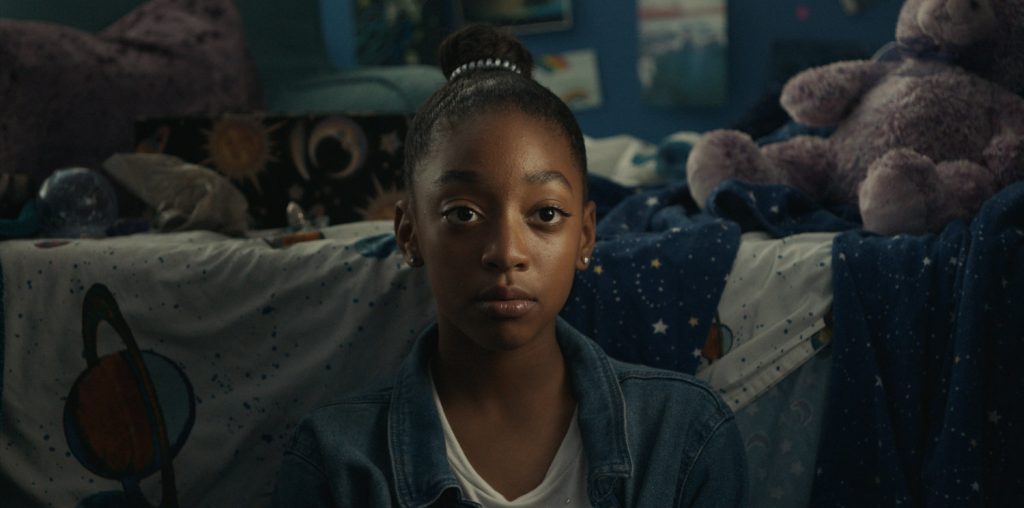My education in film began at a very young age. With a brother and sister that were several years older than me, I was constantly inundated with films that I was probably too young to see… but that I loved and obsessed over all the same. It felt like Star Wars was always on, and I’d often choose a VHS tape and watch it over and over again until it wore out. I learned a lot in watching and in repetition, with the language of film gradually building in my brain.

DVDs began releasing when I was a young teenager, and it was the plethora of special features and behind-the-scenes clips that helped me realize my calling as a filmmaker. Being able to see a director in action and understanding the job—especially the world-building aspects—is what inspired me to pursue that path. Attending a film camp in high school and having the opportunity to direct and collaborate on short films only reinforced that notion.
At film school, I was initially very intimidated by not really liking the kinds of movies I was “supposed” to like. I was a child of sci-fi, fantasy, and action films, and so the artistic genre wasn’t what I wanted to make. I felt out of place as a woman with ambitions in the genre space. Initially, I geared myself towards post-production, which felt like a safer, less visible place to be alongside other women. I learned a lot there, but I had to work to find my confidence and the ability to call myself a director.

It didn’t register with me as much at a younger age, but I began to realize that I rarely saw women in those behind-the-scenes featurettes. There have always been women directors in the industry, working hard and forging a path for those who would follow, but they’ve rarely been promoted as much in marketing as men. I can’t even think of any films assigned in film school that were made by women directors.
It’s a very male perspective that we’re constantly seeing in film, and when the director pool is homogenous, so too is the storytelling. There are so many critics and viewers complaining about how big-budget movies are all the same. If we can highlight more diverse perspectives from marginalized groups, whether it’s race or gender identity, then we’ll get more diverse storytelling.

That’s more interesting to the audience, which is a great business move. I understand how a large studio could have cold feet about breaking new ground and exploring bold new ideas: it can be a big monetary risk with little proof that it’ll work. But every single film is calculated risk, even those directed by men. Luckily, now we are starting to see the effects of more diverse storytelling in films.
On a large scale, films like Wonder Woman and Black Panther have shown that superhero flicks don’t have to be led by white men—or directed by them either. But even an indie romantic comedy like The Big Sick showed all of the little touches and benefits that come from a distinctive cultural perspective. When we see the Pakistani male lead’s drawer full of photos of women—prospective arranged matches—that his mother has given him, it’s such a unique detail that helps make the movie feel unlike anything else in its genre.

People want to see themselves in films. They want to feel represented and have an emotional experience, even if they only see part of themselves in a narrative or characters. When it comes to women-led films, there’s so much more to explore—not just a female lead, but also female relationships, whether it’s mother-daughter, friends, or sisters.
It’s something that I am committed to portraying, especially in a genre sense. With my recent short film ‘DISPEL,’ I was really lucky to have a majority of female department heads to lend their perspective and experience. We were able to tell a story about a mother and daughter, and I could share that with my production designer, costume designer, and cinematographer—everyone has a different relationship with their mother. That helped make this film stronger and more authentic.
When casting, I really kept an open mind. I didn’t have a specific look in mind for characters, whether it was race or ethnicity. I was open to who the characters and actors were. If I hadn’t opened it to everyone, then I wouldn’t have found young Eris Baker, who plays Lizzie. I can’t imagine Lizzie without Eris now. That approach really opens up the door to finding great, and perhaps even non-traditional talent. Don’t pigeonhole yourself to the status quo for the industry.
Right now, it feels like it’s in vogue to hire female or diverse filmmakers, and to have diverse casting—but it can’t just be what’s cool or popular in the moment. It has to be integrated into the way we think about hiring and portraying people in film.
There’s a lot of talk about supporting women and ethnic diversity in film, but there are two concrete things that you can do right now. First, go see those films directed by women and people of colour in the theatre. And if you’re in a position of power, hire women—not just shadowing you, but for real, meaningful jobs where they can contribute and have their presence felt. That’s how you can help empower women.
Watch Kylie Eaton’s ‘Dispel’ Here:




